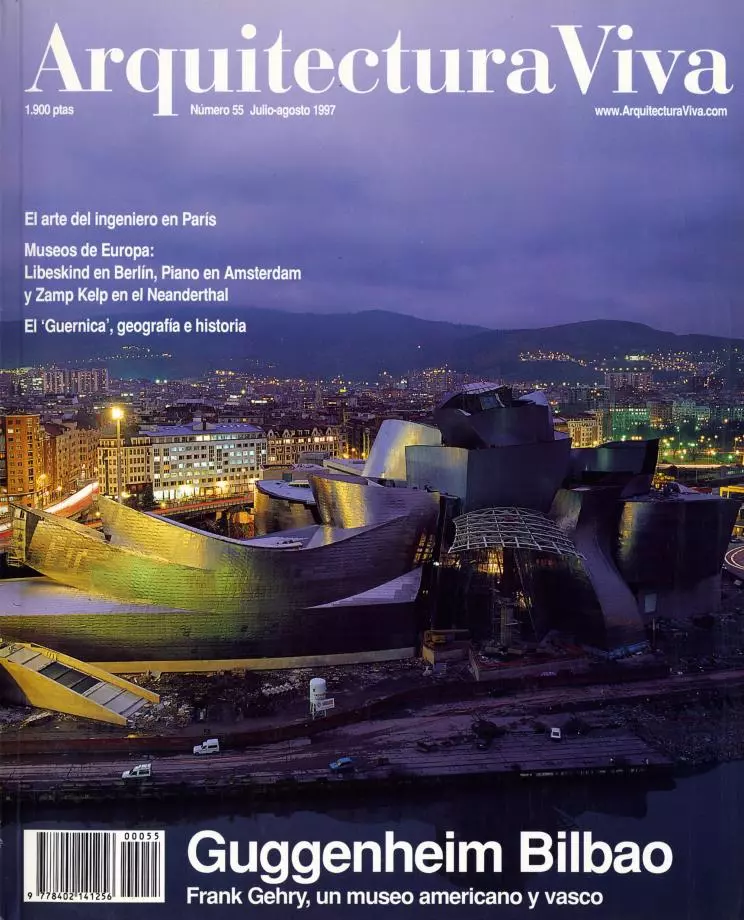
The museum of Bilbao is built with titanium and ink. Murmuring rivers of mediatic mayhem converge in its maelstrom, and its metalic swell beats against and confounds the waters of controversy. Gehry, Guggenheim, Guernica: the latest work of a great Californian architect, the first big branch of a New York museum, and the uncertain voyage of a huge and mythical canvas. The three questions get entangled on the bank of the river, around the agitated shapes of a construction that is at once an inhabitable sculpture, a cultural franchise and a political exorcism.
As sculptural architecture, Gehry's work is masterful in its urban insertion, admirable in its modeling, and irreproachable in its materialization. Its appropriation of the place is so powerful as to rule out all alternative solutions; the stormy volumes and expressionist interiors are so unexpected and dramatic that they capture the retina of the spectator; and the technical and organizational feat of its construction cannot fail to impress. It is the architect's finest mature work, and an emblematic representation of the scenographies of art in the society of spectacle.
As a franchise museum, the Guggenheim is an unprecedented cultural experiment, based on a deplorable agreement and expected to yield ambiguous economic fruits. That the biggest Spanish public effort in the field of art should be a branch of an American museum borders on the grotesque; the terms of the agreement are so unfavorable for the Basques that it can only be understood as a consequence of haste and ignorance; and the profits to be reaped from new investments and tourism depend so much on Basque political stability t hat they cannot easily be gauged.
As a gesture of exorcism, the insistence on moving the Guernica exposes the indefinition of artistic objectives, reveals the confusion of politicians, and shows the sacred and totemic nature of the venture. The repeated demand for Picasso's painting conceals the vacuity of the art collection project; lays bare the demagoguery of those who interpret history from the petty prism of toponymy; and throws light on the precocious mythical status of the museum, which needs to consecrate itself as a cult place guarding a relique that both congregates and redeems a faithful nation.
Sculpture, franchise and exorcism, this exultant eruption is a sign of crisis and hope which takes root with floral impetus beside a bridge, and sticks into the water tentacles of titanium. While doing what he always does, Gehry has timidly and tensely played the tune of an unhappy land or moment: his explosive forms simultaneously express violence and life. Titanic but not doomed like the Titanic, this sober colossus rejects the ship's fate and hesitates, uncertain, under the old moon of Bilbao, minted in titanium on a sky of ink.






